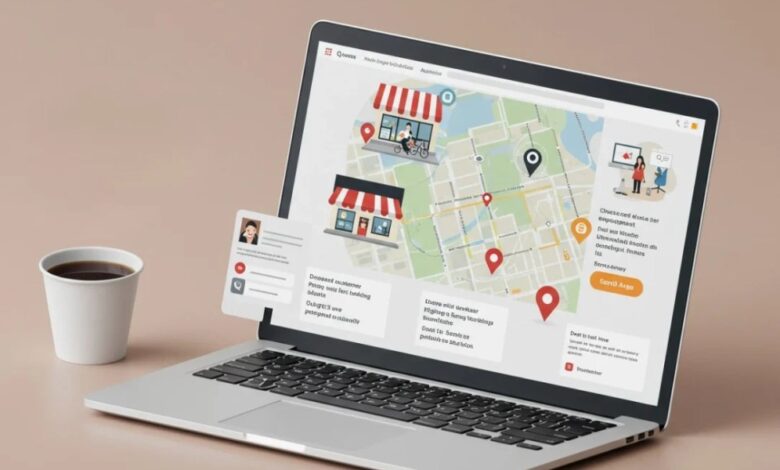Local Landing Page SEO Strategy

When it comes to attracting nearby customers, local landing pages play a crucial role in driving visibility and conversions. A well-optimized local landing page SEOÂ strategy helps businesses appear in location-based search results, build credibility, and turn online visitors into in-person customers. Whether you operate a multi-location company or a single storefront, understanding how to structure, optimize, and maintain your local landing pages is key to improving rankings and results.
What Is a Local Landing Page?
A local landing page is a dedicated web page designed to target customers in a specific geographic area. These pages typically include details like your business name, address, phone number (NAP), hours of operation, and services available in that particular location. They serve two main purposes: helping search engines understand your local relevance and providing potential customers with the information they need to take action.
For example, a pest control company with multiple offices might have separate pages for “Pest Control in Phoenix” and “Pest Control in Tucson.” Each page focuses on its respective service area, allowing search engines to show the most relevant result to local searchers. When done correctly, a strong local landing page SEO strategy ensures each page ranks well for its target city or region.
Why Local Landing Page SEO Matters
Local landing page SEO is important because Google and other search engines prioritize relevance and proximity when serving local results. Users searching for “coffee near me” or “best dentist in Austin” expect location-specific answers. Without properly optimized local pages, your business might miss out on those valuable clicks.
In addition, a solid local landing page SEO strategy supports your overall marketing goals by:
- Increasing visibility in Google Maps and organic search results.
- Enhancing trust and user experience through accurate local information.
- Helping convert more visitors into customers by aligning content with their location and intent.
Structuring Your Local Landing Pages
The foundation of a successful local landing page SEO strategy begins with structure. Each page should have a clear layout that’s easy for both users and search engines to understand.
1. Create a unique page for each location.
Never group multiple cities or regions on one page. Search engines reward specificity, so each page should target one city or neighborhood.
2. Use consistent NAP information.
Your business name, address, and phone number must be consistent across all platforms, including your website, Google Business Profile, and local directories. Inconsistent NAP details can confuse search engines and hurt rankings.
3. Include a location-focused title tag and meta description.
Every page should have a unique title tag and meta description featuring your target keyword and location. For example:
- Title: “Local Landing Page SEO Services in Denver | Your Company Name”
- Meta Description: “Boost your Denver business visibility with expert local landing page SEO strategies that drive local customers to your door.”
4. Add schema markup.
Schema (structured data) helps search engines interpret your business information accurately. Use LocalBusiness schema to highlight your location, business hours, and contact details.
Optimizing On-Page Elements for Local SEO
Once your structure is set, the next step is to optimize your on-page content. The goal is to naturally integrate location signals while maintaining a user-friendly experience.
1. Use localized keywords.
Include phrases like “local landing page SEO,” “SEO for [city] businesses,” or “digital marketing in [city].” Incorporate these keywords naturally within headings, paragraphs, and image alt text without overstuffing.
2. Write unique, relevant content.
Avoid copying content from one location page to another. Instead, tailor each page to the specific area by mentioning local landmarks, events, or customer needs. Unique content builds authority and relevance.
3. Highlight customer reviews and testimonials.
Showcase reviews from customers in that specific area to build trust and credibility. Embedding Google reviews can also enhance user experience and SEO value.
4. Include high-quality images.
Add photos of your storefront, staff, or completed projects from that location. Optimize images with descriptive filenames and alt text that include your target city.
5. Embed a Google Map.
Adding a Google Map with your location helps users find you easily and reinforces your local presence to search engines.
Technical SEO for Local Landing Pages
A strong local landing page SEO strategy also relies on technical optimization. Even the best content can underperform if your website structure and speed aren’t up to par.
1. Ensure mobile-friendliness.
Most local searches happen on mobile devices. A responsive design ensures your pages load quickly and display correctly on all screens.
2. Optimize page speed.
Fast-loading pages improve both rankings and user satisfaction. Compress images, leverage browser caching, and use a content delivery network (CDN) to enhance speed.
3. Use internal linking wisely.
Link your location pages to relevant service pages or blog content. This improves crawlability and helps distribute authority throughout your site.
4. Secure your site with HTTPS.
Search engines prioritize secure websites. If your site isn’t using HTTPS, install an SSL certificate as soon as possible.
Leveraging Local Backlinks and Citations
Backlinks remain one of the strongest ranking factors in local SEO. Earning links from reputable, location-based sources signals to Google that your business is relevant in that area.
1. Build citations on local directories.
Submit your business to reputable local directories like Yelp, Bing Places, and the Better Business Bureau. Ensure your NAP information matches your website exactly.
2. Partner with local organizations.
Sponsor community events, collaborate with local bloggers, or join your chamber of commerce. These partnerships often lead to valuable backlinks and local visibility.
3. Encourage local press coverage.
If you host events, launch new services, or participate in community initiatives, share your story with local media outlets to gain both exposure and backlinks.
Measuring and Improving Performance
A local landing page SEO strategy isn’t complete without tracking results and refining your approach. Regular monitoring ensures your efforts are paying off and highlights opportunities for improvement.
1. Track key metrics.
Use Google Analytics and Google Search Console to monitor traffic, click-through rates, and keyword rankings for each local page. Pay attention to engagement metrics like bounce rate and time on page.
2. Analyze conversions.
Determine which pages generate the most calls, form submissions, or store visits. Optimize underperforming pages by testing new headlines, calls-to-action, or images.
3. Update regularly.
Keep your local pages current with the latest hours, promotions, or service offerings. Outdated information can frustrate customers and hurt credibility.
Common Local Landing Page Mistakes to Avoid
Even the most experienced marketers can fall into common traps. Avoid these mistakes to maintain strong local SEO performance:
- Duplicate content:Â Copying one location page for multiple cities leads to keyword cannibalization and ranking drops.
- Over-optimization:Â Stuffing keywords or using unnatural phrasing can hurt readability and SEO.
- Neglecting mobile users:Â Poor mobile design drives away visitors and lowers rankings.
- Ignoring analytics: Without performance tracking, you can’t identify what’s working or where to improve.
Enhancing User Experience for Local Visitors
A successful local landing page does more than rank—it converts. Make your pages visually appealing, easy to navigate, and focused on user intent.
- Include clear calls-to-action (CTAs) like “Call Now,” “Get Directions,” or “Schedule a Consultation.”
- Feature trust signals such as certifications, affiliations, and positive reviews.
- Simplify contact forms to encourage quick conversions.
- Ensure accessibility by following web accessibility standards (WCAG).
Integrating Local SEO with Broader Marketing
Your local landing page SEO strategy should complement your overall marketing plan. Coordinate with paid ads, social media, and email campaigns to maximize reach. For instance, link your Google Ads to your location pages to improve Quality Score and ad relevance. Share local content on social media to attract engagement from nearby audiences.
By integrating SEO with other channels, you reinforce brand awareness and maintain consistent messaging across all customer touchpoints.
Building a Winning Local Landing Page SEO Strategy
Local landing pages are the backbone of effective local marketing. By focusing on structure, on-page optimization, technical performance, and community connections, your business can attract more nearby customers and improve visibility in competitive markets. A consistent, data-driven local landing page SEO strategy not only boosts rankings but also strengthens your reputation as a trusted local brand.
The key to long-term success is continuous improvement. Monitor your results, update your pages regularly, and stay aligned with local trends. With patience and precision, your optimized landing pages can become powerful drivers of growth for your business.





